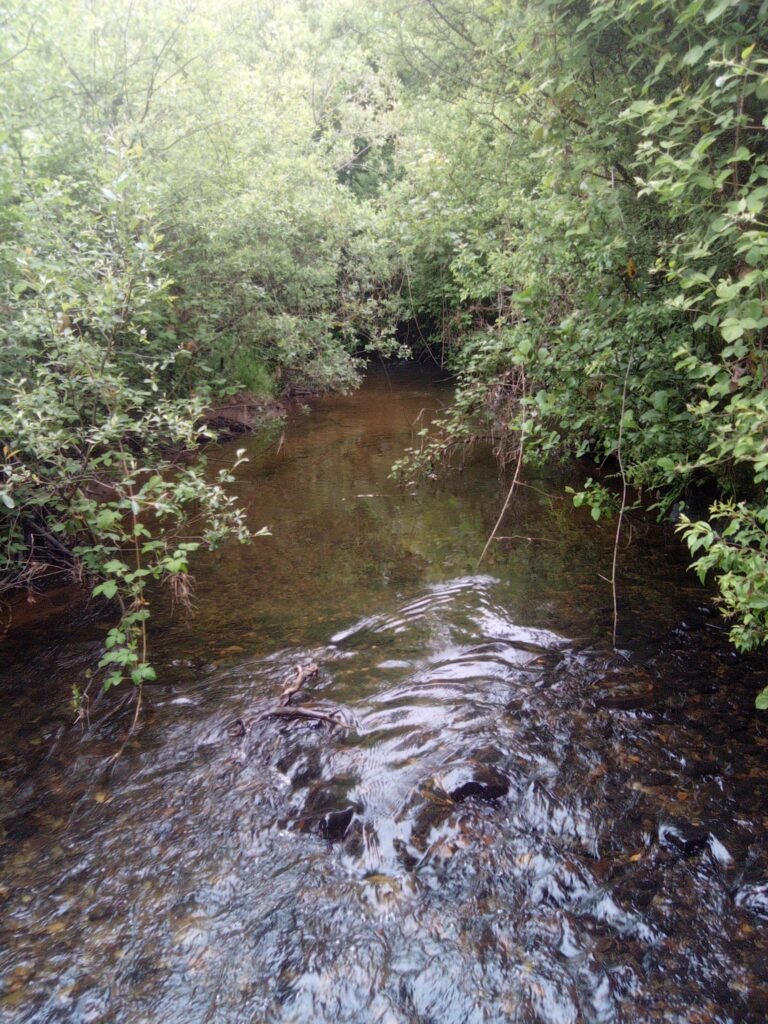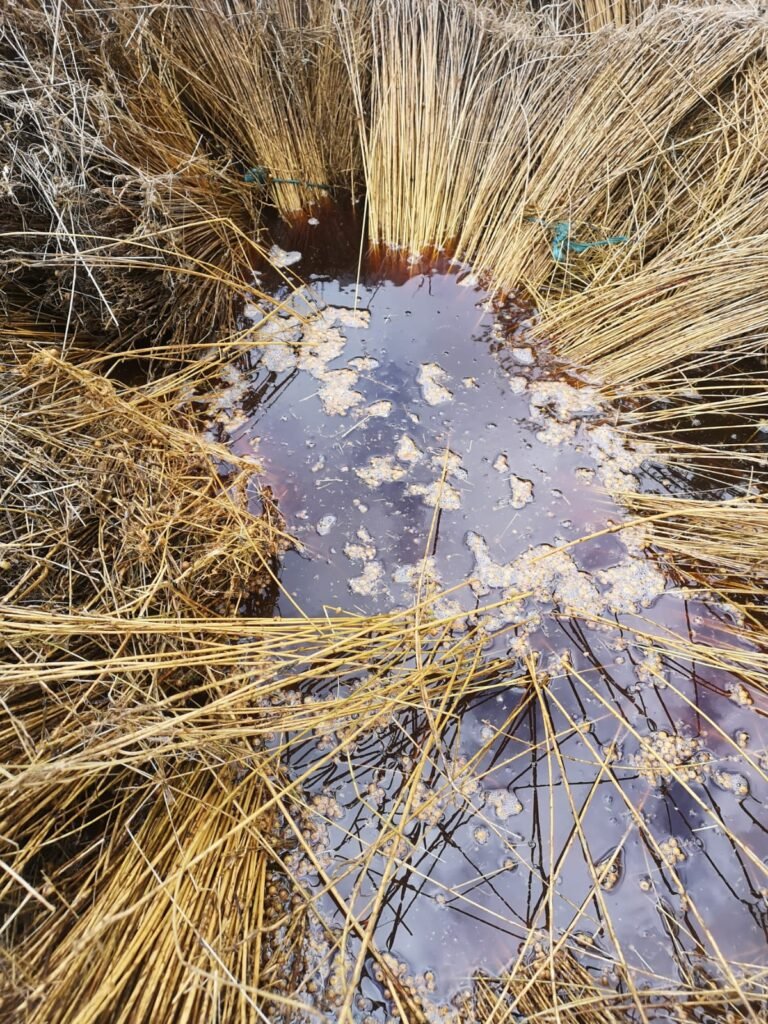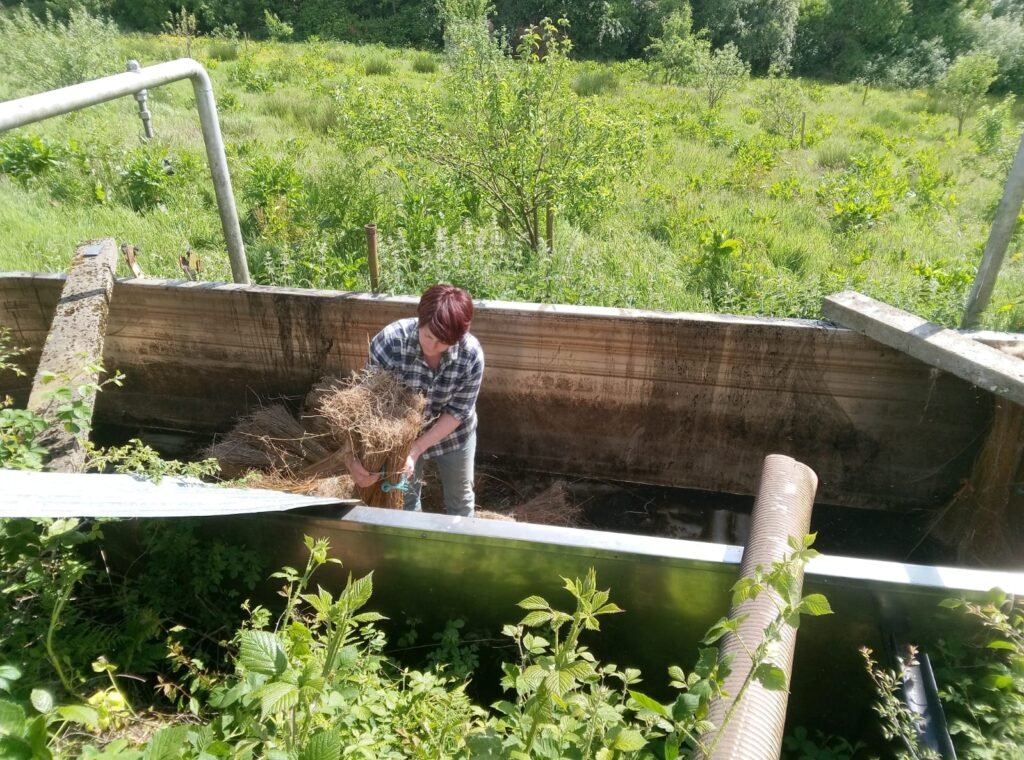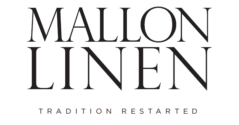
The Ballinderry River
Camlough, that calm lough, fringed with reeds
lies secret in the quiet hills of Tyrone.
There among the cobweb-crocheted whins,
a sudden spring,
a sighing gurgle – the river’s begun.
Plaiting and purling, silkily sliding – the water wanders along.
Tinkling and wrinkling, rumbling and tumbling – this is the river’s song.
Excerpt from ‘The Ballinderry River’ by Maura Johnston which features in her book of poetry, The Whetstone

The Ballinderry River
The beautiful Ballinderry River, running from the Sperrins through to Lough Neagh, played an important part in linen manufacturing in this area in the past. Landmarks along the river still stand as reminders of the industry that once flourished here. One of the most well known is now a National Trust property; Wellbrook Beetling Mill. It opened in 1764 and operated until 1961. Beetling is the process of finishing woven linen by pounding it over time to create a wonderful smooth finish and sheen. The Ballinderry river powered the large water wheel on the outside of the mill at Wellbrook which drove the beetling machinery inside. This process is still carried out today at William Clark & Sons of Upperlands, one of the last commercial beetlers in the world.

Problems in the Past
Years ago rivers here like the Ballinderry suffered because of pollution from the retting process involved in linen production. Retting occurs when the outer core of the flax stem is broken down by soaking in water, which releases the fibres. Traditionally, retting can be done by laying the flax stems out in fields and allowing the dew to soak it, or by submerging the crop, often in rivers, ponds or dams. The issues with water retting methods in rivers and dams have been linked to the decline of flax growing here so we knew that this was one part of the process that we had to rethink and do differently.

Rethinking Retting
We got great advice from local environmental conservation organisation Ballinderry Rivers Trust and eventually established a method of retting that does not damage the river system.
We use a repurposed cheese vat and harvest rain water for the tank. Once the retting process has finished, we draw the leftover water into a slurry tanker and distribute it across the field as a cost effective fertiliser, leaving buffer zones around the edges.
You can find out more about the Ballinderry River by following Ballinderry Rivers Trust and read more about our retting methods here.
